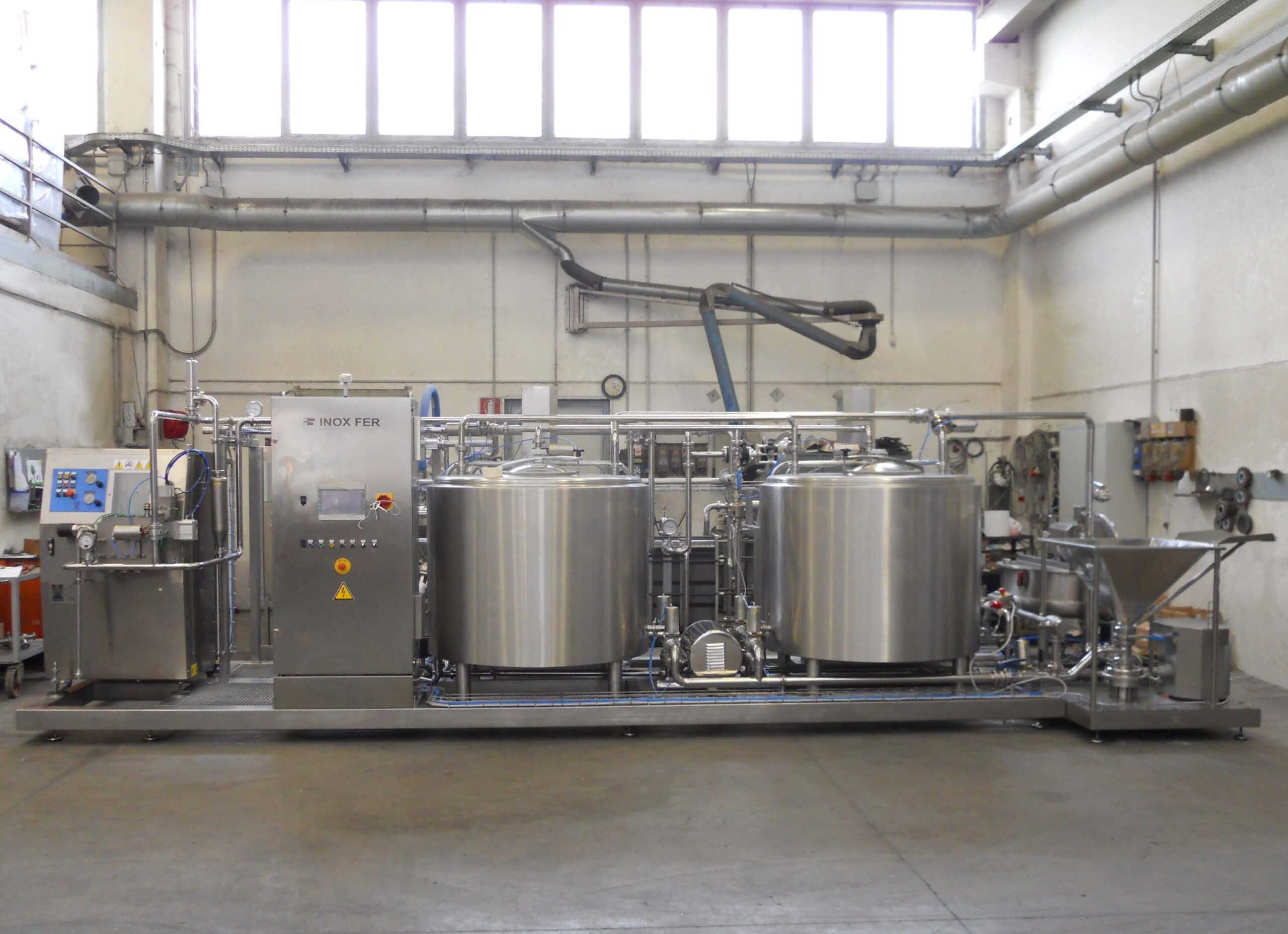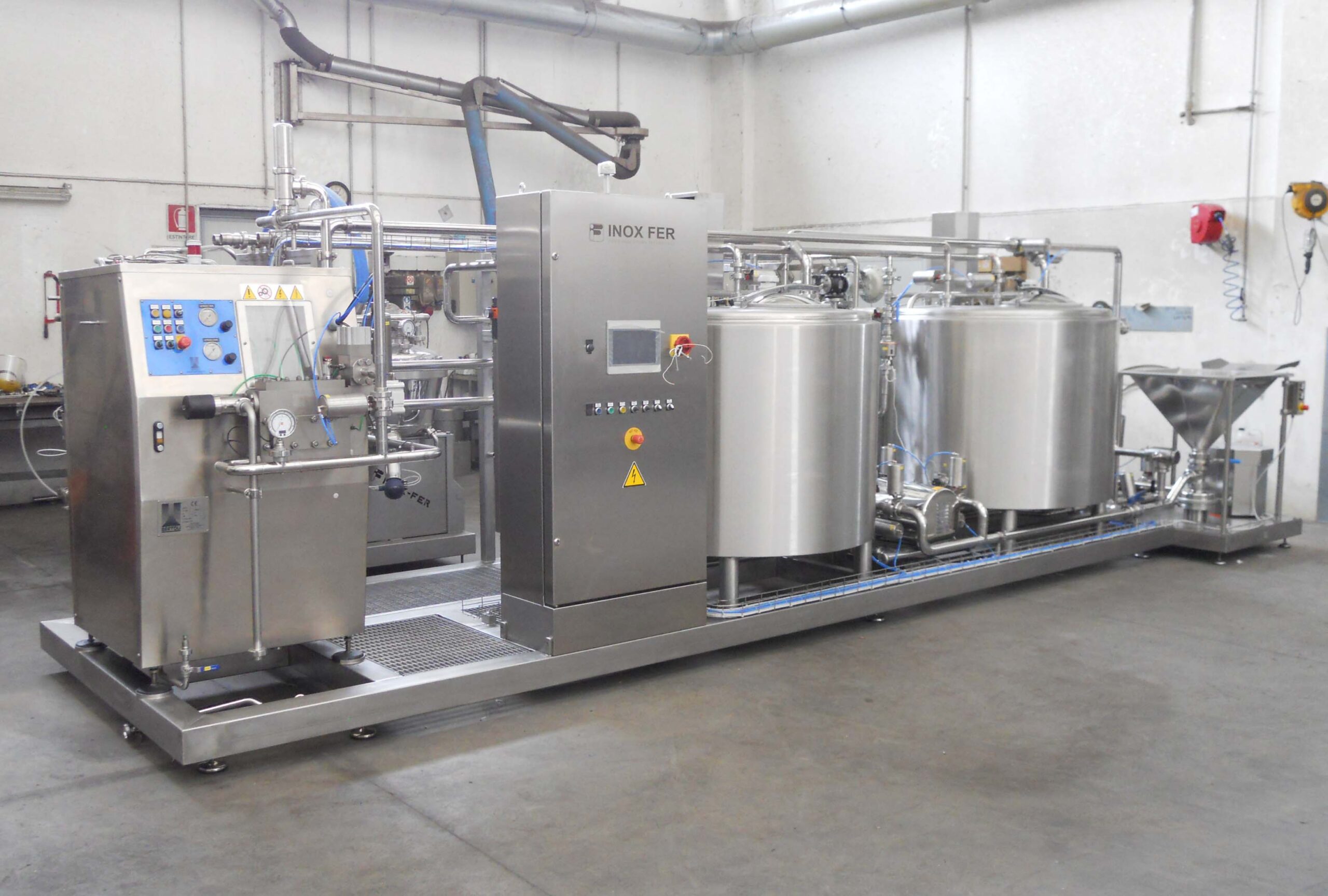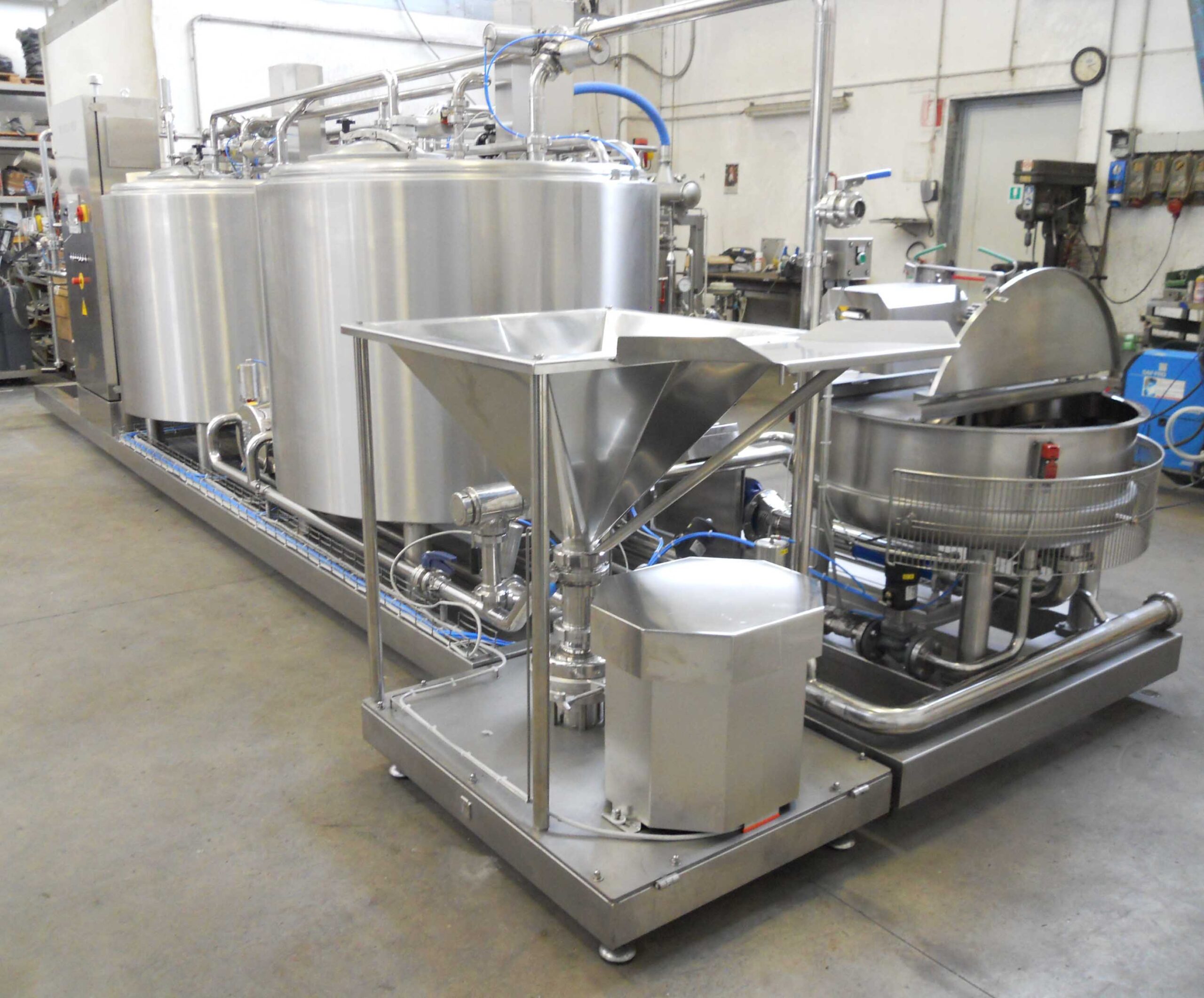Sommario
Artisanal ice-cream equipment for industrial production
The preparation of artisanal ice cream involves various stages of processing ranging from mixing to freezing. These can be performed with both hot working and cold working.
Ice cream is a cold dessert obtained by freezing and stirring a mixture of milk or water, sugar, eggs or fruit pulp with the incorporation of air until a soft and mellow product is obtained.
Based on the composition, two macro-categories are identified:
- creams prepared with milk (they are made from a base of milk and sugar, or cream to which eggs and other ingredients or flavorings can also be added)
- sorbets (or fruit ice creams) are fruit-based (they are made from a mixture of water and sugar to which fruit is added).
High quality ingredients for ice cream production
- The first ingredient due to its importance and the definition of the quality of ice cream is milk. The choice of the best milk depends on its freshness. Fresh milk is generally preferred by artisan ice cream parlours and is also used in some more expensive lines of industrial ice cream.
- Water dilutes the bases of ice creams made with powdered milk and certain fruit ice creams.
- The sugar which prevents the mixture from freezing completely. If it is added in large quantities, it makes the ice cream “sandy” on the palate.
- Fruit added in variable doses in artisanal and industrial products. It is one of the star ingredients for fruit-flavoured ice creams, sorbets, granitas and popsicles
- Eggs which in traditional gelato contribute to the stability of the result. They are the basis of cream ice creams and many others that derive from them.
- The cream gives softness and creaminess and prevents the formation of ice crystals in the mixture. It is often partially replaced with butter or vegetable fats, which are cheaper but also of lower quality.
- The aromas are important because they determine the taste of the ice cream.
- Sometimes stabilizers, thickeners and emulsifiers are also used because they affect the microstructure of the ice cream and contribute to the physical-chemical stability of the finished product.
- The air makes the ice cream light and fluffy. In the industrial one it covers half of the volume, while in the artisan one a third.
How to make artisanal ice-cream in industrial production – Steps
Reception, verification and storage of raw materials
Some raw materials are perishable (for example milk, cream, eggs) so particular attention is paid to the waiting times at room temperature during preparation, which must be reduced to a minimum to avoid the proliferation of microorganisms.
Dosage of ingredients
It is the starting point for the preparation of ice cream according to the desired recipe.
Mixing
Mixing of ingredients through dedicated machinery such as Inox-Fer mixers. This rapid method can be used for all types of ice cream and also for milk ice cream where careful cleaning is required at every stage of processing to avoid transmitting bacterial load when handling the ingredients.
Pasteurization
It is the heat treatment that allows the destruction of pathogenic bacteria, recommended when producing large quantities of artisanal ice cream. It is usually carried out with automated equipment, capable of automatically cooling the mixture as soon as it reaches the maximum temperature, usually 83°- 85° C.
Maturation
This phase is used to ensure that the different ingredients that make up the mixture blend perfectly. The maturation must last from 4 to 6 hours. The ripening temperature is around 4°C.
Freezing of artisanal ice cream
It is the phase that transforms the mixture into ice cream, making it pass from the liquid state to the solid pasty state, as part of the water is frozen.
It also allows the incorporation of a certain amount of air into the mixture, mechanically and continuously stirred during cooling.
Ice-cream Production equipment Plant INOX-FER
Inox-Fer has created various preparation systems for artisanal ice cream consisting of the following machines:
- TMV dissolver (to mix solid ingredients into liquids)
- Preparation tank with centrifugal pump also for transfer to the homogenizer (with different capacities depending on customer request)
- Homogenizer
- Pasteurizer system with heat exchanger both for the pre-heating phase and for the actual pasteurization
- Thermal stop of about 30 seconds with a series of pipes
- Heat exchangers for cooling phase



